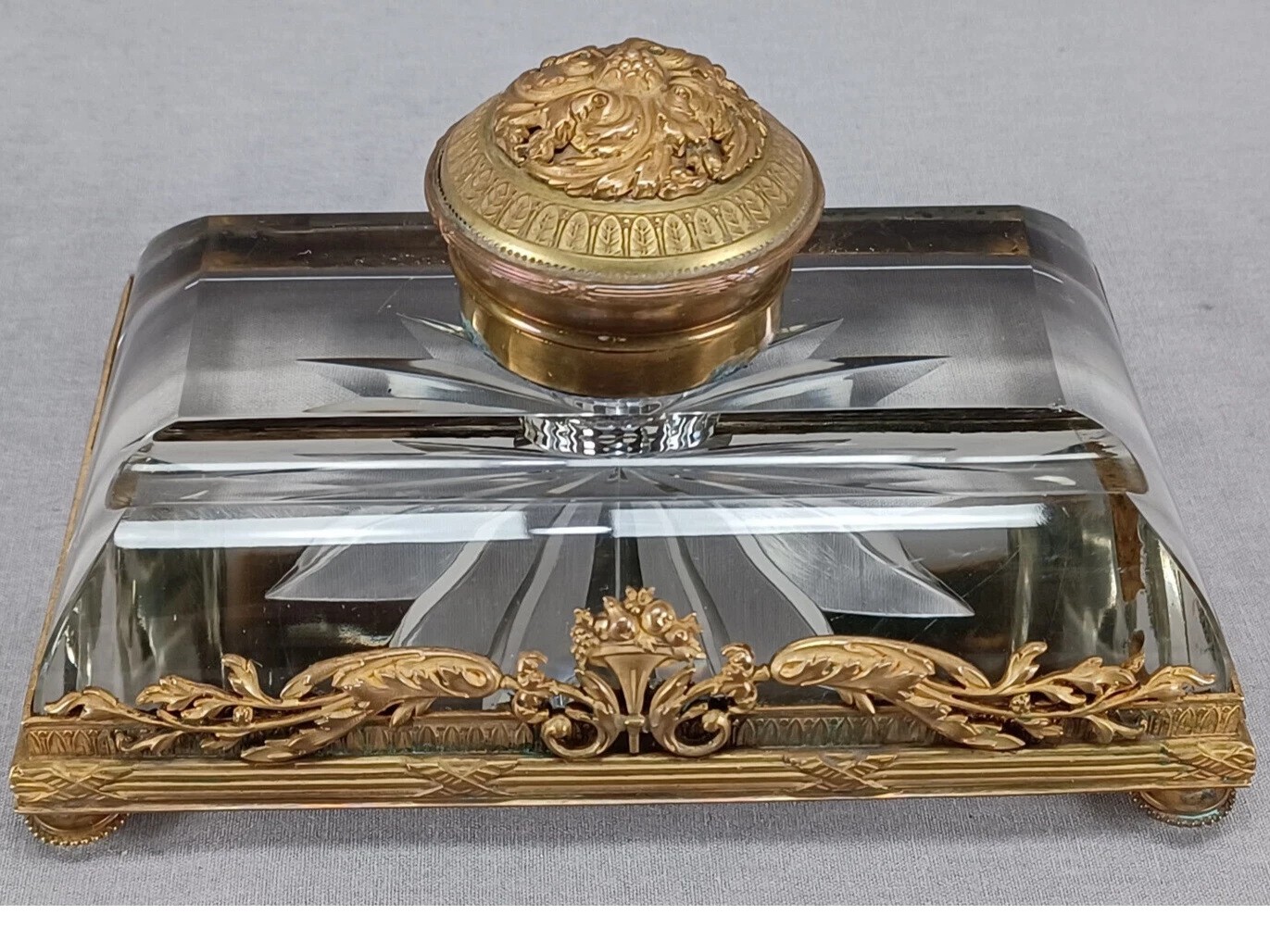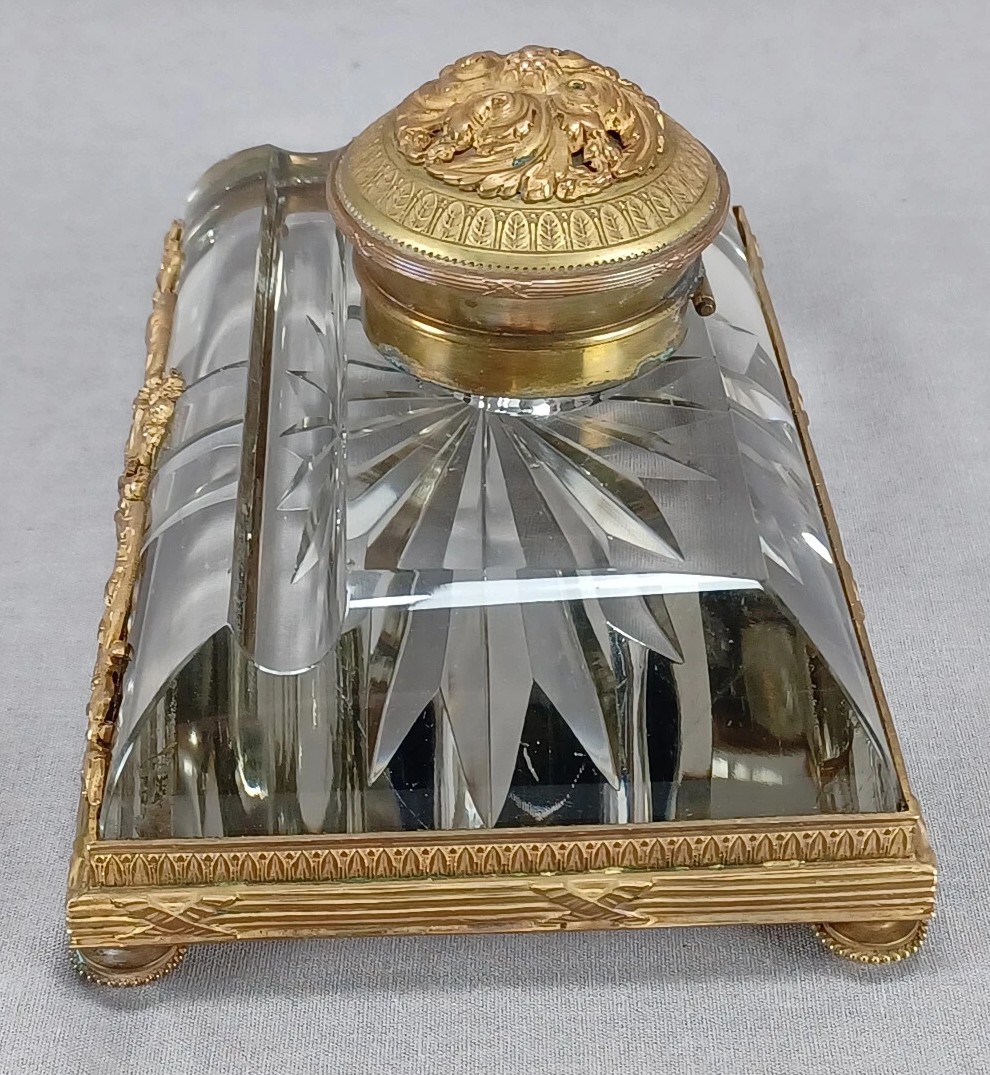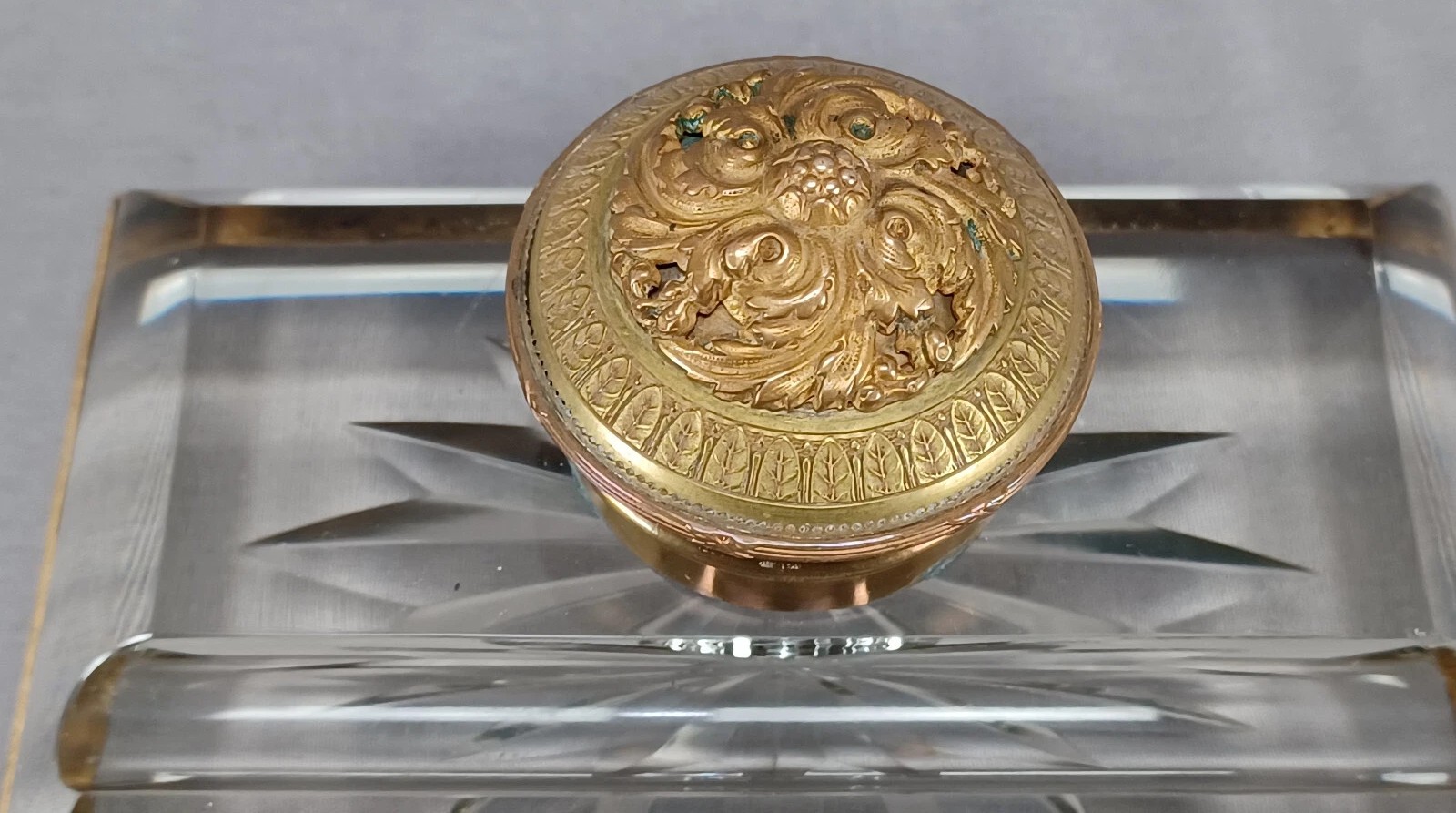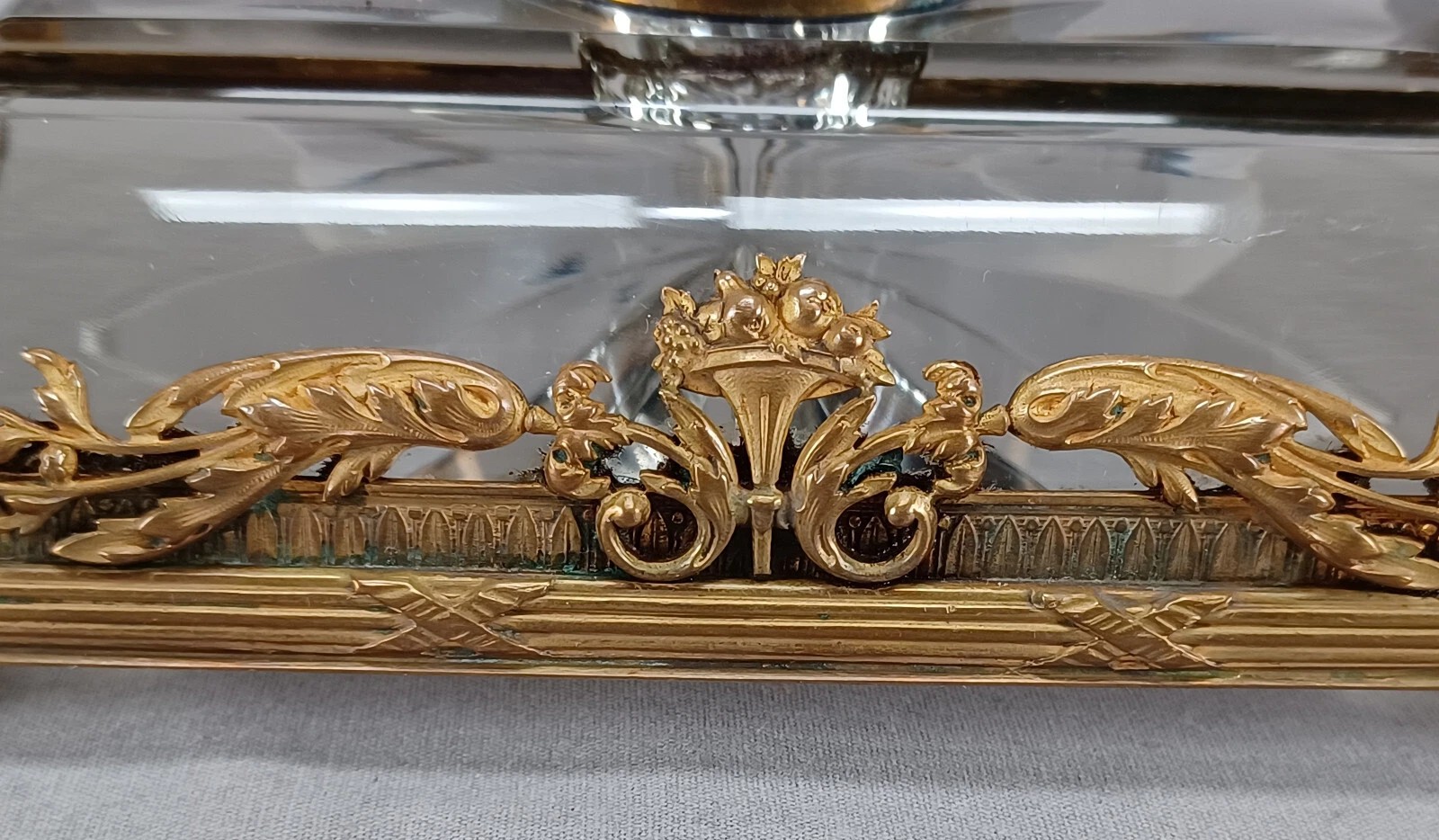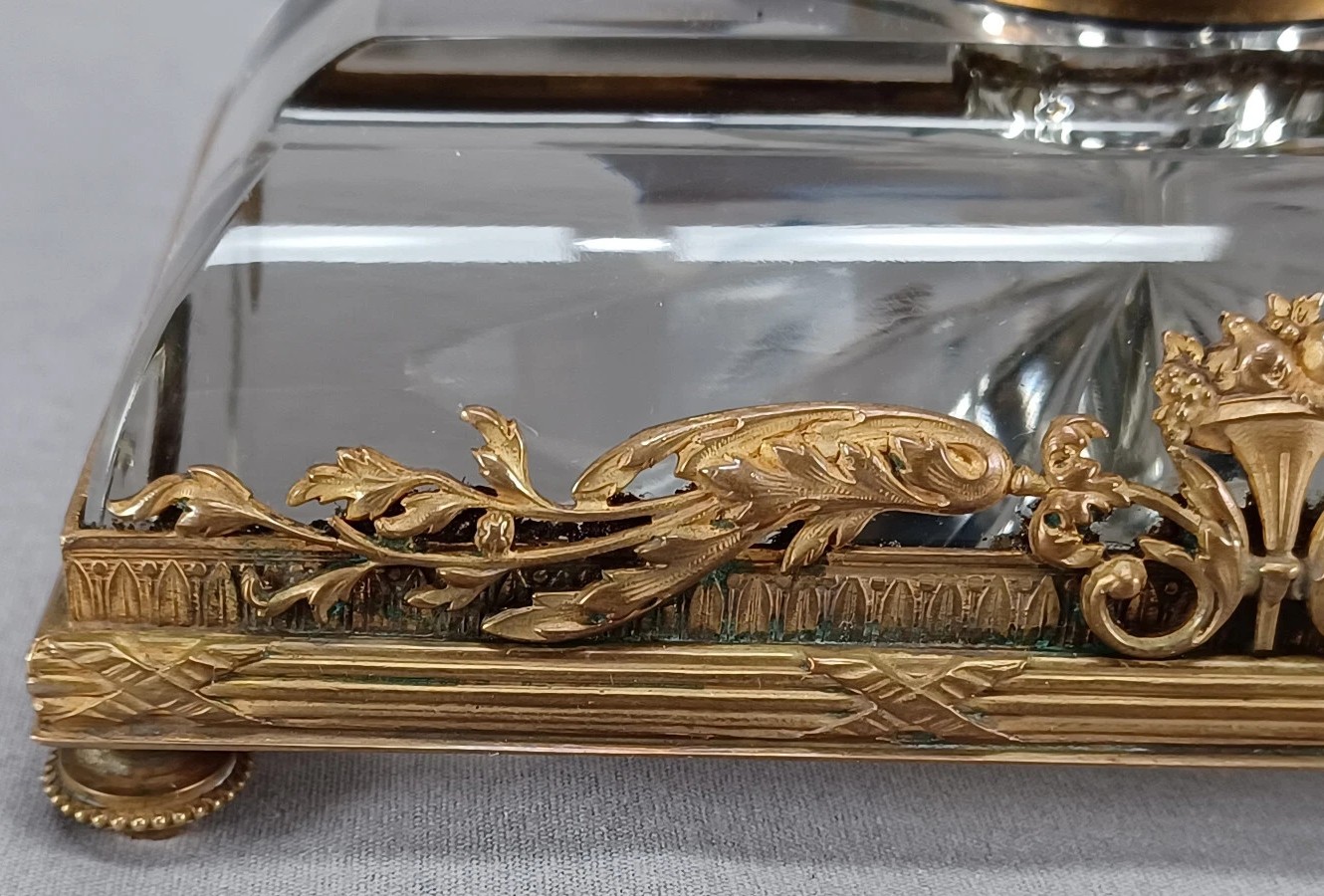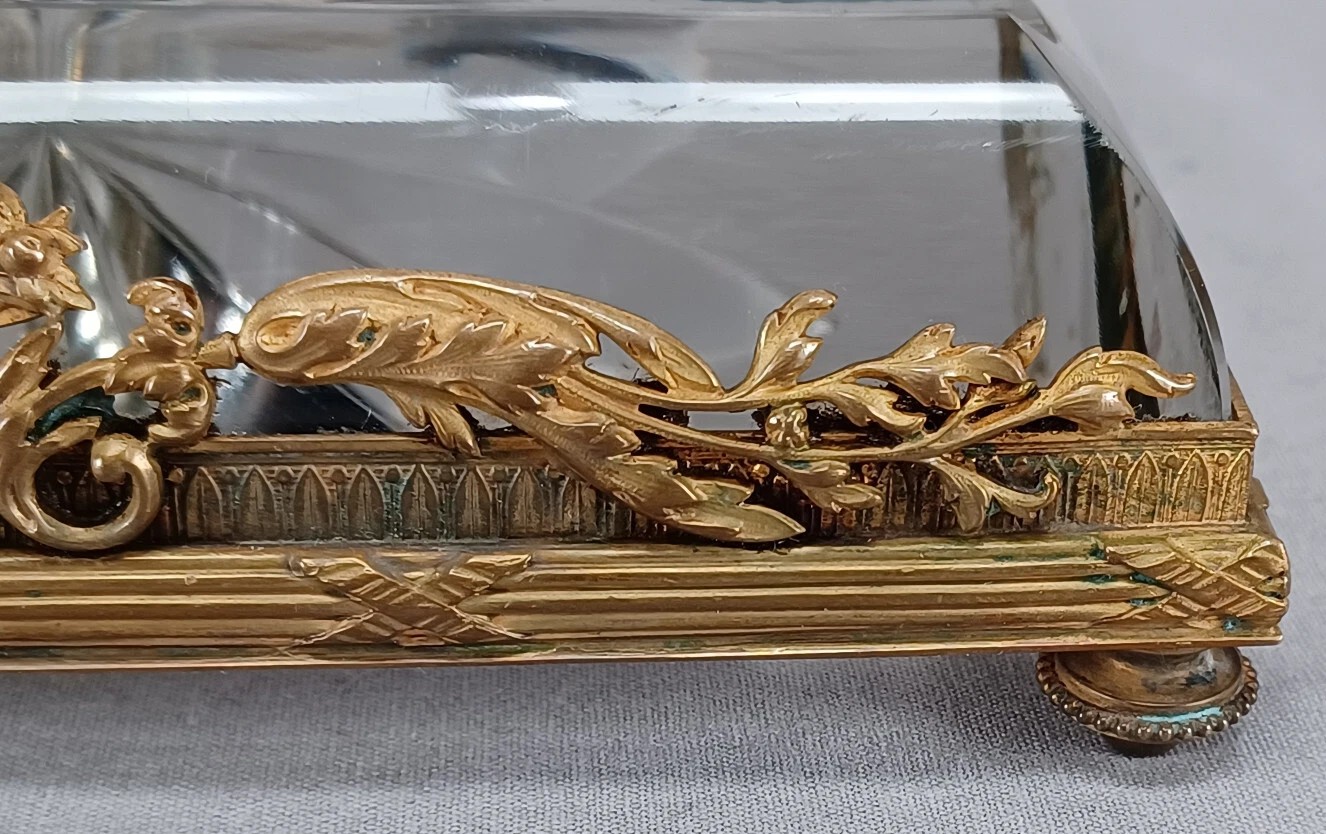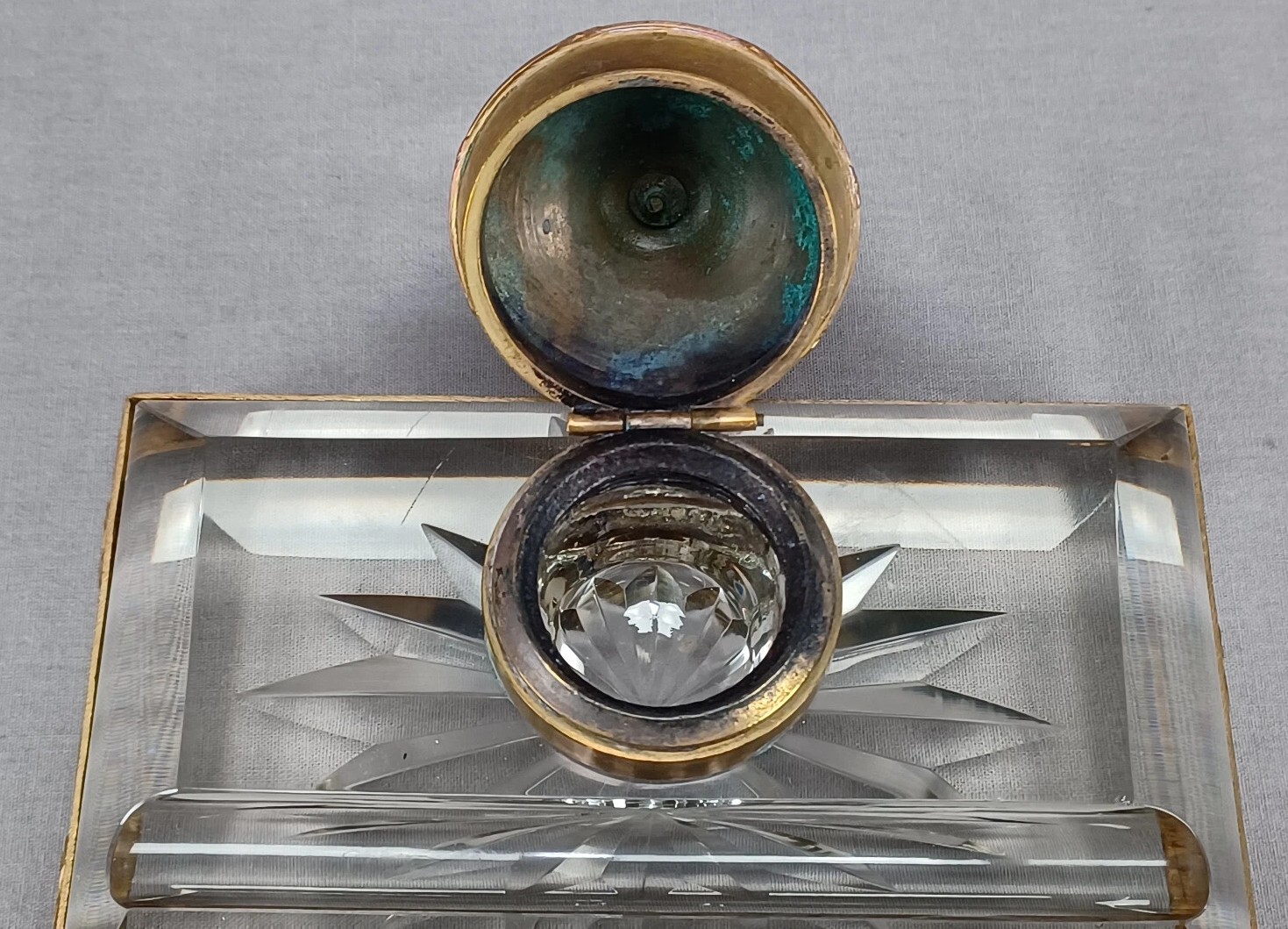
Cut Glass Inkwell with Gilt Metalwork
| Categories | Glass - Non-figural |
| Material | Glass, Gold Gilt Finish |
| Markings | Unmarked |
| Manufacturer | Undetermined |
| Origin | France |
| Date or Era | circa 1880 |
| Measuring | 6 ½” x 4 ⅛” x 3 ¾” high |
Cut Glass Inkwell with Gilt Metalwork
- Material and Construction: The main body is a solid block of thick, clear, cut glass. It is mounted within a rectangular stand made of gilt brass, commonly known as ormolu in this context. The base is supported by four small, round feet.
- Glasswork:
- Inkwell: The inkwell itself is a single central cavity within the glass block, topped by a hinged lid.
- Cutting: The glass is beautifully cut. The bottom of the inkwell features a deep, radiating starburst pattern, which catches and refracts light. The sides are polished and smooth, while the top of the glass block has a concave, fluted channel running along the front, designed to hold a pen.
- Ormolu Stand and Mounts:
- Base: The ormolu stand has a detailed, neoclassical design. The long sides feature a repeated pattern of crossed ribbons or a laurel wreath motif. The front of the stand is adorned with intricate scrollwork, acanthus leaves, and a central urn overflowing with fruit. The shorter sides feature similar scrollwork and foliate (leaf) motifs.
- Hinged Lid: The lid of the inkwell is also made of gilt ormolu. It is hinged and features a high-relief, ornate design of scrolling leaves and a central rosette. The sides of the lid have a repeating pattern of leaves.
Estimated Age
- Neoclassical and Empire Style: The use of ormolu mounts, the classical motifs such as the acanthus leaves, urns, and scrolling foliage, and the overall structured design are all hallmarks of Neoclassical and Empire styles. These periods in France were heavily influenced by Greek and Roman art and architecture.
- Craftsmanship: The quality of the metal casting and the precise cutting of the glass suggest a well-made piece from a reputable workshop. This level of detail and combination of materials was popular for luxury items during the 19th century.
Given these stylistic elements, the inkwell is likely from the 19th century. It falls within the later Neoclassical or Empire Revival periods, which were particularly popular in France. A reasonable estimate for its age would be the mid to late 19th century (c. 1850-1890).
Sold for $515 in July 2025
Content disclaimer. The information posted is the owner’s best knowledge and may not have been vetted by the SOIC. We welcome comments, corrections, and additions, working to make our website information comprehensive and accurate.
Join the Society of Inkwell Collectors (SOIC) – it’s free!
Founded in 1981 as a non-profit organization,
we are documenting inkwells (and accessories).
We’re here to help and inform!
